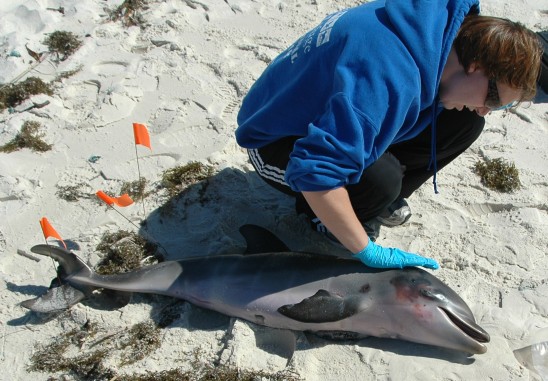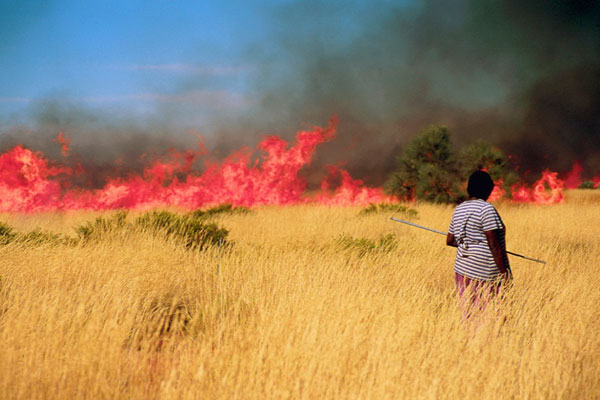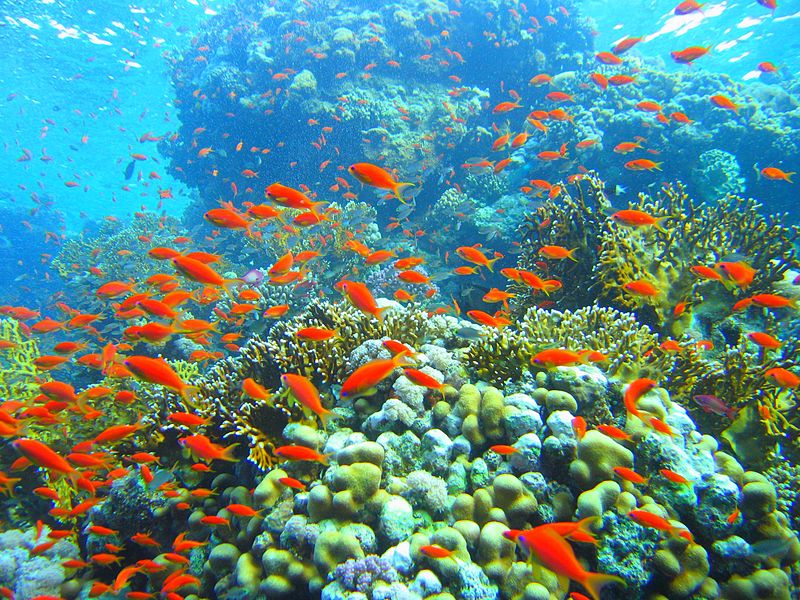
by Deep Green Resistance News Service | Jul 19, 2012 | Biodiversity & Habitat Destruction, Toxification
By University of Central Florida
The largest oil spill on open water to date and other environmental factors led to the historically high number of dolphin deaths in the Gulf of Mexico, concludes a two-year scientific study released today.
A team of biologists from several Gulf of Mexico institutions and the University of Central Florida in Orlando published their findings in the journal PLoS ONE.
For the past two years, scientists have been trying to figure out why there were a high number of dolphin deaths, part of what’s called an “unusual mortality event” along the northern Gulf of Mexico.
Most troubling to scientists was the exceptionally high number of young dolphins that made up close to half of the 186 dolphins that washed ashore from Louisiana to western Florida from January to April 2011. The number of “perinatal” (near birth) dolphins stranded during this four-month period was six times higher than the average number of perinatal strandings in the region since 2003 and nearly double the historical percentage of all strandings.
“Unfortunately it was a ‘perfect storm’ that led to the dolphin deaths,” said Graham Worthy, a UCF provosts distinguished professor of biology and co-author of the study. “The oil spill and cold winter of 2010 had already put significant stress on their food resources, resulting in poor body condition and depressed immune response. It appears the high volumes of cold freshwater coming from snowmelt water that pushed through Mobile Bay and Mississippi Sound in 2011 was the final blow.”
The cold winter of 2010 was followed by the historic BP Deepwater Horizon disaster in April 2010, which dumped millions of gallons of oil into the Gulf of Mexico, likely disrupting the food chain. This was in the middle of the dolphins’ breeding season. A sudden entry of high volumes of cold freshwater from Mobile Bay in 2011 imposed additional stress on the ecosystem and specifically on dolphins that were already in poor body condition.
“When we put the pieces together, it appears that the dolphins were likely weakened by depleted food resources, bacteria, or other factors as a result of the 2010 cold winter or oil spill, which made them susceptible to assault by the high volumes of cold freshwater coming from land in 2011 and resulted in distinct patterns in when and where they washed ashore,” said Ruth Carmichael, a senior marine scientist at the Dauphin Island Sea Lab, an assistant professor of Marine Sciences at the University of South Alabama and the lead author of the study.
The majority of perinatal strandings were centered on the Mississippi-Alabama coast, adjacent to Mobile Bay, the 4th largest freshwater drainage in the U.S. The onshore movement of surface currents during the same period resulted in animals washing ashore along the stretch of coastline where freshwater discharge was most intense.
Others who contributed to the study include: William M. Graham and Stephan Howden from the University of Southern Mississippi, Stennis Space Center and Allen Aven from the Dauphin Island Sea Lab and the University of South Alabama.
Worthy is the Hubbs Professor of Marine Mammalogy. He received his PhD in 1986 from the University of Guelph in Canada and then completed post-doctoral training at the University of California at Santa Cruz, where he studied elephant seals, bottlenose dolphins and California sea lions. He spent 11 years as a faculty member in the Department of Marine Biology at Texas A&M University at Galveston and served as the State Coordinator for the Texas Marine Mammal Stranding Network.
Worthy and his team at UCF have been studying dolphin populations in the Pensacola and Choctawhatchee bays for years.
From University of Central Florida News: http://today.ucf.edu/study-points-to-causes-of-dolphin-deaths-in-gulf-of-mexico/
by Deep Green Resistance News Service | Jul 16, 2012 | Mining & Drilling, Obstruction & Occupation
By Laurie Tuffrey / The Guardian
Greenpeace activists shut down 74 Shell petrol stations in Edinburgh and London in a protest against the company’s plans to drill for oil in the Arctic that saw 24 campaigners arrested on Monday.
The campaigners are attempting to shut off petrol to London’s 105 Shell stations and Edinburgh’s 14. Seventy-one have been closed in London and three in Edinburgh.
There have been 24 confirmed arrests, 18 in London and six in Edinburgh. The police in Edinburgh have reportedly parked cars outside all Shell stations across the capital.
Protesters have scaled the roof of the Shell station on Queenstown Road near Battersea Park in London and on Dalry Road in Edinburgh, with police and fire crews attending the scene in Edinburgh.
Activists arrived at the Battersea Park branch at 6.45am and used the station’s barriers to close down the forecourt. They have since covered the Shell sign with a Save the Arctic banner and positioned a life-sized polar bear model on the station’s roof.
The activists are shutting down the stations by using an emergency shut-off switch to stop petrol going to the pumps and then removing a fuse to delay it being switched on again. The organisation has since posted a picture of an activist posting one of the fuses to Shell’s head of Arctic drilling, with the message: “We’re being careful not to destroy property. Even the carefully removed components will go back to Shell.”
The protest is part of Greenpeace’s Save the Arctic campaign, which is aiming to prevent oil drilling and industrial fishing in the Arctic by having the region recognised as a world park. The organisation understands that Shell is going to begin drilling in the Alaskan Arctic in the coming weeks, with the Russian oil company Gazprom also due to work in the region.
The campaign group’s website is running a TV talkshow-style live broadcast covering the protest and showing interviews and videos about the Arctic campaign.
Sara Ayech, a campaigner at the Battersea Park station, said: “It’s time to draw a line in the ice and tell Shell to stop. That’s why today we’re going to shut down all of Shell’s petrol stations in the capital cities of London and Edinburgh. We’ve got dozens of people who will hit over 100 Shell garages throughout the day.”
Graham Thompson is another campaigner who helped shut down the station: “The staff were very pleasant and very reasonable. Obviously they’re not entirely happy about what’s going on but they’ve responded in a very civilised way.
“Obviously, we need to ratchet up the pressure, we need to let Shell know that this isn’t just a publicity campaign, we’re going to put pressure on them until they agree to stop what they’re doing,” said Thompson, commenting on future plans.
Read more from The Guardian: http://www.guardian.co.uk/environment/2012/jul/16/greenpeace-activists-shell-petrol

by Deep Green Resistance News Service | Jul 14, 2012 | Listening to the Land
By Max McClure / Stanford University
Western Australia’s Martu people set small fires as a matter of course while hunting lizards. But the technique may also buffer the landscape against two extremes – overgrown brush and widespread lightning fires – that hurt Australia’s endangered small mammals.
When species start disappearing, it usually makes sense to blame it on the arrival of humans. But in the case of Western Australia’s declining small-mammal populations, the opposite may be true.
The Aboriginal Martu people of Western Australia have traditionally set small fires while foraging, leaving a patchwork landscape that proves a perfect environment for bilbies, wallabies, possums and other threatened mammals.
Stanford anthropologists have discovered that when these controlled burns cease, the desert rapidly becomes overgrown – and a single lightning strike can send wildfires tearing through hundreds of square miles of tinder-dry mammal habitat.
The paper, authored by Stanford anthropology Associate Professor Rebecca Bliege Bird, senior research scientist Douglas Bird, postdoctoral scholar Brian Codding and undergraduate Peter Kauhanen, appeared recently in the journal Proceedings of the National Academy of Sciences.
Hunting with the Martu
Martu Native Title, deep in Australia’s Western Desert, contains some of the most remote human settlements in the world. Parnngurr, a Martu community with a population of around 80, is located more than 200 miles from the nearest mining outpost.
Making the most of the harsh, arid landscape’s resources, the Aboriginal Australians hunt bustard, emu and kangaroo and collect a wide variety of fruits, tubers and seeds. But their most important resource is the sand goanna – a 4-foot long burrowing lizard that accounts for nearly 40 percent of all foraged calories.
The goanna hunt likely hasn’t changed in thousands of years. In winter, when the lizards are hibernating, groups of women head out from the camps and set fire to patches of the spinifex grass covering den entrances.
Once the brush has been cleared, the woman who sets the fire has first rights to dig out any goanna burrows she finds in the fire scar.
The practice is so ingrained in Martu culture that the Martu language has words for every stage of plant growth following a fire, ranging from nyurnma – a fresh fire scar – to kunarka – a landscape overgrown with spinifex.
“If you’re out hunting with Martu, it involves fire all the time,” said Douglas Bird. “You can’t understand any of their values without factoring in the fundamental role of fire.”
Comparing scars
The Martu were cleared from their lands in the mid-1960s to make way for the British government’s Blue Streak missile tests. Until the people won the official title to their territory again in 2002, an Alabama-sized portion of the Western Desert that they had previously managed saw no controlled fires.
Without human intervention, El Niño-driven monsoons had allowed dense spinifex to spring up in some areas and sprawling lightning-caused fire scars to appear in others.
“You ask the Martu people, and they explain, ‘We left, and the fire regime broke down,'” Douglas Bird said.
Now, 10 years after the Martu’s reinstatement of traditional hunting practices across their territory, the researchers compared a decade’s worth of fire scars in hunting grounds to land without an Aboriginal Australian presence.
The differences were stark. Where Martu women had hunted for goanna, the fire scars were smaller and more clustered, and there was a greater variety of ground cover.
Outside these areas, lightning strikes had burnt a small number of enormous scars, often larger than 10,000 hectares in size.
“Without the Martu, it’s very much like what we have in California,” said Rebecca Bliege Bird. “The desert is covered with a large, contiguous set of fuels.”
The burning also seemed to buffer against major seasonal changes – spreading fires throughout the year, rather than concentrating them during periods of extreme drought.
Managing for mammals
Evidence suggests that the lightning-style landscape is no good for small mammals. Thick brush is difficult to travel through – spinifex is tipped with painful silica points – and large fire scars mean few resources and more exposure to predation.
Australia’s mammal populations are disappearing faster than anywhere else in the world, and there’s reason to believe that the decline coincided with the collapse of Martu fire regimes.
“Presumably the same resources have been used for at least 5,000 years,” said Douglas Bird. “That’s plenty of time to get strong coupled interactions between humans and other mammals.”
Alternately, the researchers suggest, there is evidence that Australia’s climate variability was less extreme before humans arrived. Aboriginal peoples’ burning practices may have recreated the conditions mammals had originally evolved in.
“It challenges a bias that a lot of ecologists have,” said Rebecca Bliege Bird, “which is that all human impacts are negative.”
Western Australian Environment and Conservation officials have taken note of Martu strategies and currently conduct extensive prescribed burns across Western Australia, but official resistance to hunting and gathering remains.
“The government would rather come up with an interventionist policy than support these traditional processes that provide the same services,” Rebecca Bliege Bird said.
From Stanford University News: http://news.stanford.edu/news/2012/july/australia-hunting-fire-071212.html

by Deep Green Resistance News Service | Jul 9, 2012 | Biodiversity & Habitat Destruction, Climate Change
By the Associated Press
Oceans’ rising acid levels have emerged as one of the biggest threats to coral reefs, acting as the “osteoporosis of the sea” and threatening everything from food security to tourism to livelihoods, the head of a US scientific agency said Monday.
The speed by which the oceans’ acid levels has risen caught scientists off-guard, with the problem now considered to be climate change’s “equally evil twin,” National Oceanic and Atmospheric Administration (NOAA) chief Jane Lubchenco told The Associated Press.
“We’ve got sort of the perfect storm of stressors from multiple places really hammering reefs around the world,” said Lubchenco, who was in Australia to speak at the International Coral Reef Symposium in the northeast city of Cairns, near the Great Barrier Reef. “It’s a very serious situation.”
Oceans absorb excess carbon dioxide in the atmosphere, leading to an increase in acidity. Scientists are worried about how that increase will affect sea life, particularly reefs, as higher acid levels make it tough for coral skeletons to form. Lubchenco likened ocean acidification to osteoporosis a bone-thinning disease because researchers are concerned it will lead to the deterioration of reefs.
Scientists initially assumed that the carbon dioxide absorbed by the water would be sufficiently diluted as the oceans mixed shallow and deeper waters. But most of the carbon dioxide and the subsequent chemical changes are being concentrated in surface waters, Lubchenco said.
“And those surface waters are changing much more rapidly than initial calculations have suggested,” she said. “It’s yet another reason to be very seriously concerned about the amount of carbon dioxide that is in the atmosphere now and the additional amount we continue to put out.”
by Deep Green Resistance News Service | Jul 2, 2012 | Colonialism & Conquest, Indigenous Autonomy
By Gethin Chamberlain / The Guardian
A fierce row has broken out over a controversial plan to drive a road through pristine Amazon rainforest, imperilling the future of some of the world’s last uncontacted tribes.
The 125-mile (200km) road would pass through the Alto Purús national park in Peru, connecting a remote area to the outside world but opening up the most biologically and culturally important area of the upper Amazon to logging, mining and drug trafficking. Opponents of the plan fear it will threaten the existence of uncontacted tribes such as the Mashco-Piro. The first detailed photographs of members of the tribe made headlines around the world earlier this year after they were spotted on a riverbank.
The majority indigenous population of the region appears to be largely united in its opposition to the road, which would run parallel to the Brazilian border, connecting the towns of Puerto Esperanza and Iñapari. Conservationists warn it would cause irreparable harm to the environment and the area’s people.
But the road has the support of many mixed-race settlers – or mestizos – who make up roughly one fifth of the region’s population. With the Alto Purús currently accessible only by plane, they believe that the road would improve their quality of life, bringing lower prices for fuel and food and creating profitable development opportunities.
The campaign to build the road has been led by an Italian missionary, Miguel Piovesan, who claims that indigenous people are being kept isolated and denied the chances for development available to the rest of the population. He first proposed the road in 2004, around the time the Peruvian government announced that the Alto Purús was to become the country’s largest national park.
Piovesan’s plan’s met with little initial enthusiasm, but his long and determined campaign, using his own radio station and parish website, has been so successful that the country’s Congress is now due to debate a bill to allow construction to start. Piovesan has been scathing about his opponents, particularly international organisations such as Survival International and the WWF, which he accuses of profiting from keeping the tribes in isolation.
“These international organisations gain money because they present themselves as the saviours of the Indians, this is what it’s all about. So if the Indians evolve, they [the NGOs] lose their business,” he said on a recent radio show. Last week he told the Observer that the reality was that the indigenous people were being kept in a condition of “captivity and slavery incompatible with the true ecology”.
But Piovesan’s opponents suspect that he is more interested in gaining access to potential converts for his church. Reports from Peru say that he has denied the existence of the uncontacted tribes. The main indigenous organisation in Puerto Esperanza, Feconapu, has demanded that the Vatican remove the priest, accusing him of insulting and humiliating the native population.
One indigenous leader, Julio Cusurichi, warned that building the road would amount to “ethnocide” of the uncontacted tribes. According to the last census, in 2007, there are only about 3,500 people living in the region, including eight known tribes and an unknown number of uncontacted Indians living in the Madre de Díos territorial reserve. The 6.7m-acre national park is also home to wildlife including jaguar, scarlet macaw and giant river otter.
The Upper Amazon Conservancy, which works with the indigenous population, has been one of the most vocal critics of the road. Its director, Chris Fagan, accused the road’s supporters of short-sighted greed and said the majority of the population were vehemently opposed.
“They depend on the forest and rivers for daily sustenance. They see the highway as just the latest example of mestizo greed and exploitation – of rubber, their religion, animal skins, mahogany, and now a highway accessing their homelands,” he said. “It will ruin one of the wildest and culturally important places on Earth. Will reason or greed prevail?”
Read more from The Guardian: http://www.guardian.co.uk/world/2012/jul/01/amazon-highway-peru-tribes-risk



